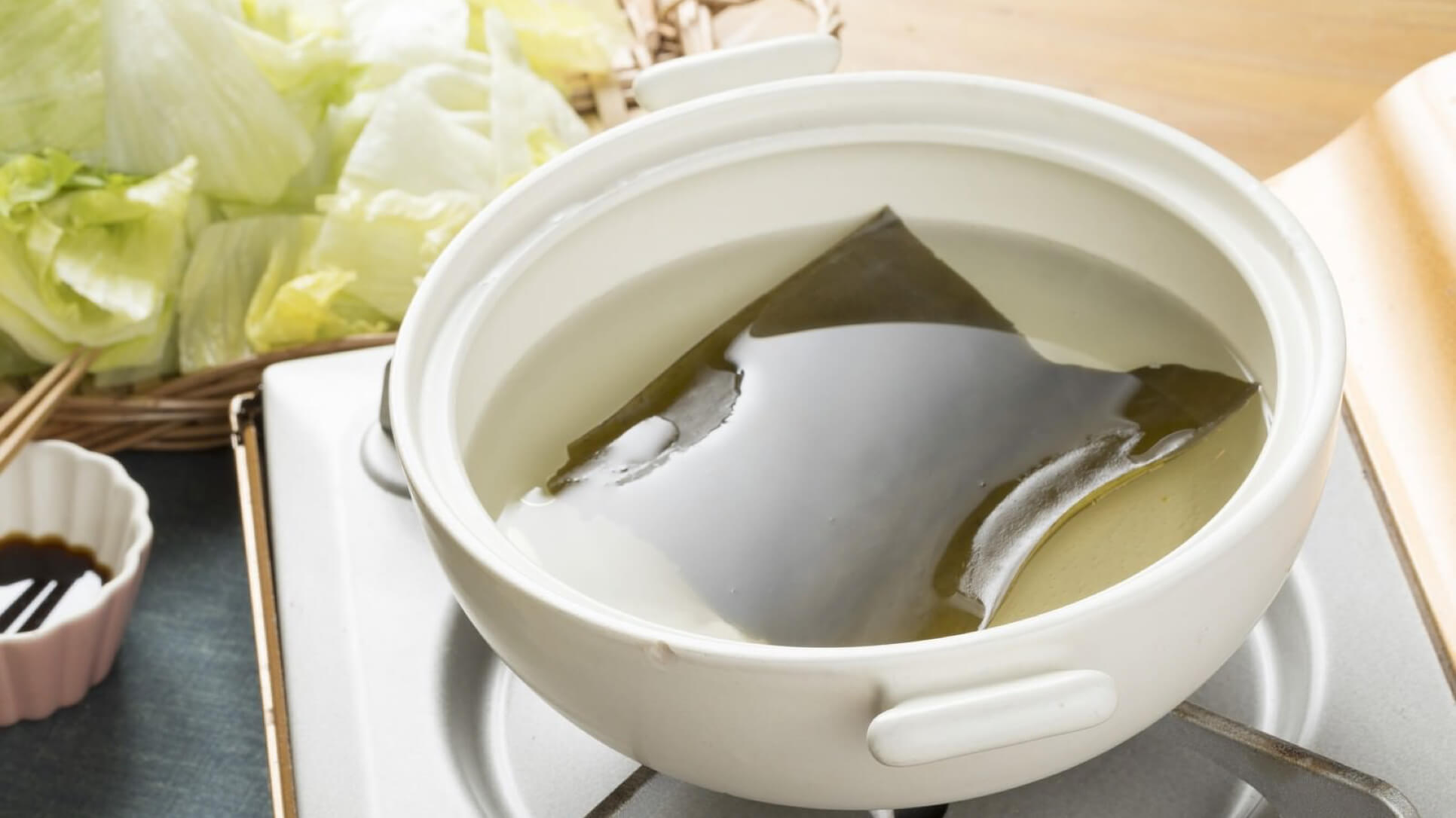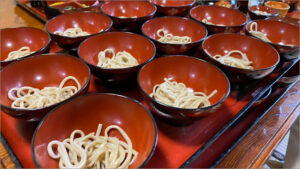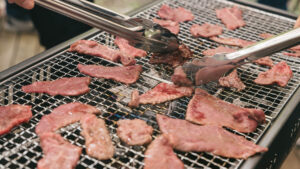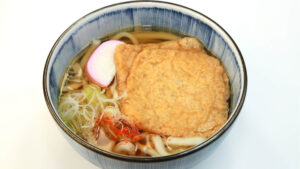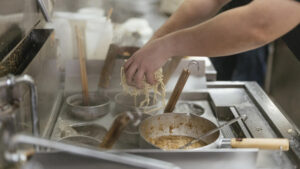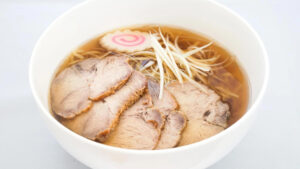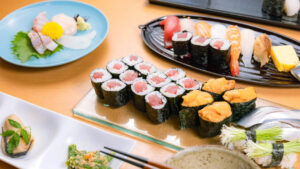Japanese cuisine’s indispensable “dashi” is the very source of umami and a crucial element that defines the flavor of washoku. Extracted from kombu (kelp), katsuobushi (bonito flakes), dried shiitake mushrooms, and other ingredients, dashi forms the base of a wide range of dishes—such as miso soup, nimono (simmered dishes), and osuimono (clear soups)—offering a single sip rich depth and nuanced flavor. In this article, we’ll explain the fundamentals of dashi, explore the characteristics of each ingredient, cover extraction methods, blending techniques, and regional variations in a way that’s easy for non-Japanese readers to understand. After reading, you’ll be ready to recreate authentic Japanese taste at home.
Contents
What Is Dashi: The Heart of Japanese Cuisine
Definition of Dashi
Definition and Characteristics
Dashi is the savory broth (“umami”) extracted by gently simmering ingredients such as kombu (kelp), katsuobushi (bonito flakes), and dried shiitake mushrooms in water or hot liquid. It adds depth and richness to dishes, enhancing the natural flavors of the ingredients. In Japanese cuisine, dashi is indispensable as the base for miso soup, clear soups, and simmered dishes.
Historical Origins
The origins of dashi date back to the Heian period (794–1185), evolving through imperial court cuisine and temple vegetarian cooking. At that time, techniques for boiling dried kombu and shiitake to extract flavor were established, and by the Edo period, katsuobushi had become widely available and popular in ordinary households.
Cultural Significance
Dashi is more than just a seasoning; it symbolizes the concept of “umami” deeply rooted in washoku culture. By combining dashi with seasonal ingredients, it expresses the flavors of each season, and the use of local ingredients highlights regional characteristics, making dashi a cornerstone of Japanese food culture.
Role of Dashi in Japanese Cuisine
Enhancing Umami
The glutamic acid (from kombu) and inosinic acid (from katsuobushi) contained in dashi dramatically elevate the overall umami of a dish. This allows you to achieve deep richness even with reduced salt and seasonings, bringing out the natural flavors of the ingredients.
Balancing Flavors
Dashi functions as the “flavor foundation” that harmonizes the five tastes—sweet, sour, salty, bitter, and umami. It gently rounds out strong seasonings or oiliness, ensuring the entire dish comes together with a well-balanced profile.
Expressing Seasonal Character
By combining dashi with seasonal ingredients—such as nanohana and wild greens in spring, tomatoes and edamame in summer, mushrooms in autumn, and daikon or root vegetables in winter—you capture the essence of each season in your cooking. Adjusting the aroma and color of dashi to match the season further enriches the sense of Japan’s changing seasons.
Basic Terms and Concepts
Difference Between Umami and Kokumi
Umami refers to the taste sensation produced by chemical compounds such as glutamic acid and inosinic acid, giving a slow-spreading, profound savoriness in the mouth. Kokumi, on the other hand, is a broader concept that includes not only umami but also the richness and weight derived from fats and proteins. The umami of dashi serves as the foundation, and when combined with the kokumi of other ingredients and seasonings, it creates a more multidimensional and satisfying flavor.
Ichiban Dashi / Niban Dashi
Ichiban dashi is the first, highest-quality extraction from ingredients like kombu and katsuobushi, resulting in a clear, delicate broth. It’s ideal for dishes where a light, refined flavor is desired, such as sashimi dipping sauces or premium clear soups. Niban dashi is made by re-simmering the used kombu and katsuobushi, producing a darker, more robust broth. It’s well suited for heartier dishes like simmered vegetables, miso soup, and rice bowl bases.
Regional Terminology
The ingredients and names for dashi vary across Japan. In Kansai, a lighter “usukuchi dashi” centered on kombu is preferred, while in Kanto, a stronger “koikuchi dashi” based on katsuobushi is more common. In Kyushu, flying fish (ago) is used to make “ago dashi,” and in Okinawa, broths stewed with pork bones and fish flakes are traditional. Learning these local terms and ingredients makes it easier to incorporate regional flavors into your cooking.
Main Ingredients for Dashi
Kombu (Kelp)
Selecting Quality Kombu
The flavor of kombu varies greatly depending on its origin and processing method. Rausu kombu offers a rich umami, Rishiri kombu provides a clean, refreshing aroma, and Hidaka kombu is known for its mellow taste. Choose kombu that isn’t overly dark in color and has a moderate amount of white powder (natural umami compounds) on the surface.
Pre-Preparation (Cleaning & Scoring)
The surface of kombu can carry natural salt residues or dust, so gently wipe it with a dry cloth or paper towel. Avoid rinsing with water, as this can wash away precious umami compounds. To help the flavors extract more quickly, make a few shallow cuts in the center of the kombu.
Storage & Reuse Tips
Store kombu in a dry, airtight container or resealable bag in a cool, dark place to keep out moisture. For partially used strips, squeeze out excess air before sealing to maintain flavor. After you’ve used kombu to make dashi and it becomes soft, chop it finely and reuse it in dishes like tsukudani (sweet-soy simmered kelp) or stews to make the most of its remaining umami.
Bonito Flakes (Katsuobushi)
Types and Characteristics
There are two main types of katsuobushi: “arabushi” and “karebushi.” Arabushi is simply steamed bonito that has been sun-dried or smoked, offering an aromatic profile with a slight tang. Karebushi undergoes additional mold fermentation and aging, resulting in a mellow, deeply savory flavor favored for high-quality dashi.
Proper Storage
Katsuobushi dislikes moisture and direct sunlight. After opening, store it in an airtight container in a cool, dark place or in the refrigerator’s vegetable drawer. Because shaved bonito flakes oxidize quickly, divide them into small portions, remove as much air as possible, and only open what you need to maintain maximum freshness.
Grades and How to Assess Quality
High-grade katsuobushi is finely and evenly shaved, with a light, translucent color. Look for labels such as “hon-karebushi,” “ipponzuri” (single-line cut), or “hanakatsuo,” which indicate meticulous processing and superior raw materials. Choosing flakes with minimal dust and a strong bonito aroma will enhance the depth of your dashi.
Alternative Ingredients (e.g., Dried Shiitake)
Rehydrating Dried Shiitake
Soak dried shiitake in lukewarm water or room-temperature water for 30 minutes to 1 hour. The soaking liquid absorbs abundant umami, so don’t discard it—use it as a richly flavored broth. Adjust soaking time based on the size and dryness of the mushrooms.
Flavor Characteristics
The broth from dried shiitake offers a distinctive aroma and gentle sweetness, rich in glutamic acid. Its deep, earthy richness complements kombu and katsuobushi broths and works well in Western-style soups and risottos, making it a versatile dashi alternative.
Usage Tips
Dried shiitake is ideal when you want a purely plant-based dashi or for vegetarian/vegan cooking. Blending with katsuobushi adds aromatic depth, while combining with kombu enhances complexity. Use on its own or in blends depending on your desired flavor profile.
Basic Dashi Extraction Methods
Hot Extraction (Atsudashi)
Temperature Control Tips
- For kombu, use water heated to 60–80 °C to gently draw out umami. Stop heating just before boiling (around 90 °C) to maintain a clear, clean flavor without off-notes.
- For katsuobushi, remove from heat before adding the flakes. Pour in hot water, then immediately reduce to low heat or rely on residual heat to fully develop the aroma.
Recommended Steeping Times
- Kombu dashi: Steep for about 60–90 minutes to release umami slowly (30 minutes works in a pinch).
- Katsuobushi dashi: Once added, steep for 1–2 minutes only; over-steeping can introduce bitterness or off-flavors.
Straining Techniques
- Use a fine-mesh strainer or cheesecloth, gently enclosing the ingredients and straining slowly to preserve clarity and aroma.
- Press katsuobushi flakes lightly with your fingers—avoid squeezing too hard to prevent cloudiness and unwanted sediments.
Cold Extraction (Mizudashi)
Ingredient-to-Water Ratio
- Kombu dashi: 10–15 g of kombu per 1 L of water
- Katsuobushi dashi: 10 g of katsuobushi per 1 L of water
- Awase dashi: 5–10 g of kombu + 5 g of katsuobushi per 1 L of water (adjust to taste)
Recommended Soaking Times
- Refrigerate overnight (6–8 hours) to fully extract umami
- If in a hurry, soak at room temperature for 3–4 hours, though refrigeration is preferred
Flavor Profile Differences
- Low-temperature extraction minimizes off-flavors and bitterness, yielding a gentle, smooth mouthfeel
- Umami components dissolve gradually, imparting subtle sweetness and a refreshing kelp note
- Milder aroma compared to hot extraction, making it ideal for delicate seasonings and chilled clear soups
Awase Dashi (Blended Dashi)
How to Make Ichiban Dashi (First Dashi)
- Soak kombu in water for at least 30 minutes (preferably 1 hour), then slowly heat over low heat. Remove the kombu just before the water boils.
- Turn off the heat and add katsuobushi, letting it steep in the residual heat for 1–2 minutes. When the flakes settle, gently strain with a cloth or fine sieve.
- The resulting clear and refined broth is called ichiban dashi.
How to Make Niban Dashi (Second Dashi)
- After making ichiban dashi, return the used kombu and katsuobushi to the pot, add water, and reheat.
- Bring to a boil, then simmer over low heat for 3–5 minutes.
- Strain to obtain a richer, more robust niban dashi, suitable for simmered dishes and miso soup.
Blending Ratios
- The basic ratio is ichiban dashi to niban dashi of 7:3 or 6:4. Use more ichiban dashi for delicate flavors, and increase niban dashi for richer taste.
- For a total of 1 liter of awase dashi, roughly combine 700 ml ichiban dashi and 300 ml niban dashi.
- Adjust the ratio based on the dish, season, and personal preference to enjoy a wide range of flavors.
Blended Techniques & Regional Variations
Typical Blended Dashi
Kombu + Katsuobushi Combination
The mellow glutamic acid from kombu combines with the sharp inosinic acid from katsuobushi to create a synergistic umami effect. This classic blended dashi forms the foundation of Japanese cuisine and is widely used in miso soup, simmered dishes, udon broth, and many other recipes.
Shiitake + Katsuobushi Combination
The rich depth and sweetness of dried shiitake meet the light aroma and deep umami of katsuobushi, resulting in a dashi with complex layers of flavor. This blend is also popular as a vegetarian-friendly dashi, offering nuances that neither ingredient can produce alone.
Vegetable-Based Blends
Dashi made with aromatic vegetables such as onions, carrots, and celery can be adapted to both Western and Japanese dishes. The natural sweetness and umami from the vegetables, combined with kombu or shiitake, create a gentle flavor that works well as a base for soups, risottos, and hot pot dishes.
Regional Dashi Styles
Differences Between Kansai and Kanto Styles
In Kansai, light-colored dashi centered on kombu is predominant, characterized by a delicate aroma and refined umami. In contrast, Kanto favors darker, stronger dashi based mainly on katsuobushi, featuring a robust flavor and deeper color. Even miso soup differs: Kansai uses white miso or light soy sauce for a gentle taste, while Kanto employs blended miso and dark soy sauce for a richer, more pronounced flavor.
Unique Variations in Kyushu and Okinawa
Kyushu is known for “ago dashi,” made from flying fish, which offers a clean sweetness and toasted aroma. This dashi is especially popular in Nagasaki and Saga ramen broths. In Okinawa, traditional dashi is made by simmering fish flakes and pork bones, combining rich pork and seafood umami to create the flavorful base of Okinawa soba and other local dishes.
Seafood Dashi in Hokkaido
Hokkaido features dashi made from kombu as well as a wide variety of seafood such as scallops, shrimp, and crab. The “kaisen dashi” blend, combining Rishiri and Ma kombu with scallop soaking liquid, offers a rich yet clear taste that works well in hot pots, chawanmushi, and other dishes. Utilizing seasonal seafood ingredients, this dashi showcases the luxurious flavors unique to Hokkaido’s food culture.
Instant & Powdered Dashi
Instant and powdered dashi allow you to easily enjoy authentic dashi flavor, making them convenient for busy daily cooking and large-scale meal preparation. Simply dissolve them in hot water or add at the end of cooking to quickly boost umami and richness.
Features of Granulated Dashi
- Dissolves evenly in water, minimizing uneven seasoning.
- Many products blend kombu and katsuobushi with other ingredients like mackerel flakes, dried sardines, and shiitake mushrooms.
- Some contain added salt and seasonings, so check the packaging and adjust the overall saltiness of your dish accordingly.
Kombu and Katsuobushi Powder Mixes
- Pure kombu and bonito powders are blended for a balanced, natural umami profile.
- Stronger aroma and richer flavor compared to granulated dashi.
- A simple sprinkle enhances soups, noodle broths, and stir-fries with deeper taste.
Using Dashi Cubes
- Cube-shaped solid dashi eliminates measuring hassle; one cube typically equals about 150–200 ml of broth.
- Some varieties can be frozen, allowing you to take out only what you need while maintaining fresh flavor.
- Be mindful of the salt and seasoning content in cubes, adjusting additional salt or soy sauce in miso soup or hot pot to avoid over-seasoning.
Storage Methods, Usage Tips, and Common Mistakes
Best Practices for Storage
Refrigeration Tips
- After cooling, transfer dashi to a storage container, seal tightly, and place it in the back of the refrigerator where temperature fluctuations are minimal.
- Use within 2–3 days to maintain freshness; prolonged storage may degrade flavor and increase the risk of bacterial growth.
Freezing Tips
- Freeze in small portions using ice cube trays or silicone molds for easy portioning.
- Once fully frozen, transfer cubes to a resealable bag to prevent freezer burn.
- Thaw naturally or heat frozen cubes gently in a pot over low heat to preserve umami.
Labeling with Date and Contents
- Write the preparation date and type (e.g., “March 1 – Ichiban Dashi”) on containers or bags for easy tracking.
- Use transparent labels or masking tape in the freezer since contents may be hard to see.
Common Mistakes
Overheating Kombu
Boiling kombu causes not only the umami compounds but also bitterness and harsh flavors to dissolve, resulting in cloudy dashi. Always stop heating just before boiling to carefully extract only the desired umami.
Insufficient Extraction Time
If the soaking time is too short, the dashi will lack depth and richness. For cold extraction, ensure at least 6 hours of soaking, and for hot extraction, soak kombu for about 30 minutes to bring out satisfying aroma and flavor.
Using Old Ingredients
When kombu or katsuobushi ages, their umami compounds degrade, leading to a weaker flavor and noticeable off-tastes. Use ingredients promptly after purchase, and store them in airtight containers, dividing into smaller portions to maintain freshness and enjoy consistently delicious dashi.
Key Points for Making Dashi
Success in making dashi depends on selecting good ingredients, proper preparation, and careful control of extraction temperature and time. Wipe and score kombu before use, and extract katsuobushi briefly using residual heat. Remember techniques like cold extraction (mizudashi) and blending first and second dashi (awase dashi) to expand your cooking possibilities. Incorporating regional styles such as the light-flavored Kansai dashi or Kyushu’s ago dashi further broadens your culinary repertoire. Store dashi refrigerated for 2–3 days or freeze in small portions using ice cube trays. Avoid using old ingredients or overheating to maintain freshness. By following these tips, you can bring authentic Japanese depth and flavor to your everyday meals.
